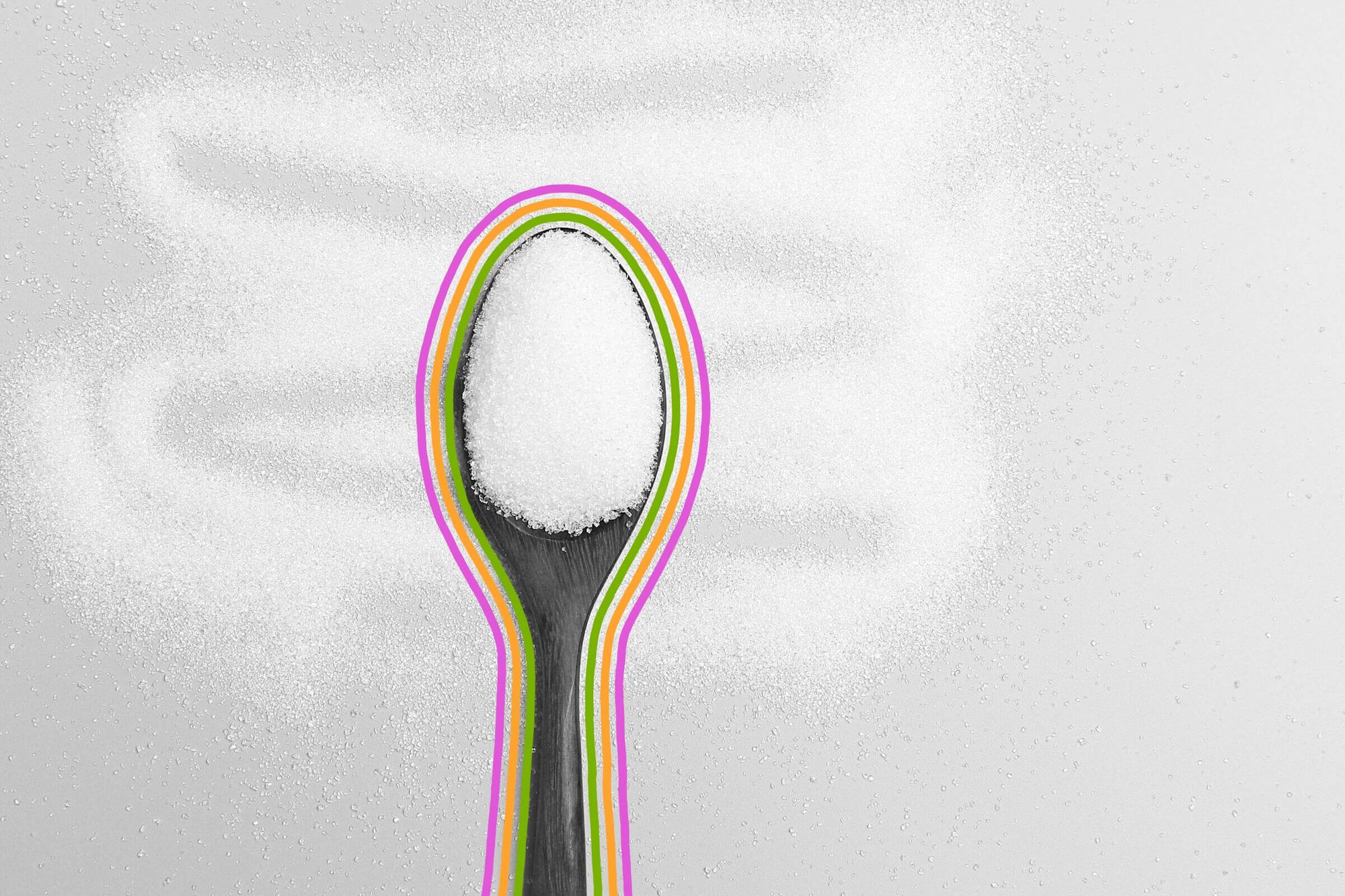

It’s hard to imagine life without a spoonful of sugar. It helps fuel our sweet tooth and our bursts of energy, and it just may be a future way to power high-flying jets. It’s also been with us for a while: Scientists believe the saccharine substance likely made its way into our guts by accident millennia ago, eventually becoming a standard human craving as it spread across the globe. Take a bite out of sugar’s backstory with these six sweet facts.
All Plants Produce Sugar

Not all plants are made for eating, and chances are most aren’t palatable to human taste buds. However, nearly all plants make sugar, particularly those with green leaves. Sugar, aka sucrose, consists of two simple sugars, glucose and fructose; glucose is a naturally occurring byproduct of photosynthesis, the process plants undergo to convert sunlight to energy. Plants produce glucose in their leaves and then send it to their roots, storing the energy they need to grow.
All plants store their sugar differently; some, like potatoes, transform it into starch, while others, like apple and orange trees, store sugar in their fruits. Plants with particularly high concentrations of glucose are the ones humans harvest for table sugar — specifically sugar cane and sugar beets.
Sugar Cane Originally Comes From New Guinea

More than 60 million acres of land worldwide are used for sugar cane farming, often in regions that were once tropical forests. The crops thrive in warm climates with consistent year-round temperatures — generally in spots close to the equator. However, biologists believe sugar cane plants, aka Saccharum officinarum, originated in just one spot — New Guinea — where Indigenous peoples may have cultivated the crop starting 10,000 years ago. Some researchers believe sugar cane was originally grown for chewing, like gum, and early farmers selected the sweetest, softest stalks for consumption. Over time, humans helped spread Saccharum plants through Southeast Asia, India, and the Pacific islands, where they merged with other wild sugar canes to create the modern variety we know and grow. By the 15th century, sugar cane plants made their way to the Americas, where they became established crops; today, Brazil is the world’s leading exporter of sugar cane.
More Than One-Third of the World’s Sugar Comes From Beets

Not all commercially produced sugar comes from sugar cane plants; about one-third of the world’s sugar supply comes from sugar beets, a root crop that thrives in cooler temperatures far from the equator. More than half of the U.S. sugar supply comes from sugar beets, which are grown in Michigan, Minnesota, Montana, and other northern and western states, and each year more than 4.5 million tons of sugar are produced from American-grown sugar beets. Each beet grows for about five months before reaching its maximum size: about a foot long, and weighing between 2 and 5 pounds. While sugar cane and sugar beets are grown and processed differently, the final sugar product is chemically identical. Nevertheless, some chefs believe the two sugars cook slightly differently and can have contrasting colors when caramelized or used to make syrups.
The 1904 World’s Fair Was a Sugar Showcase

World’s fairs may feel like a relic of the past; the last one in North America was in Vancouver in 1986. Yet they were the launching point for some of today’s favorite sugary treats. At the 1904 world’s fair (aka the Louisiana Purchase Exposition) in St. Louis, attendees got their first sample of fairy floss, the fluffy spun-sugar that’s now more commonly called cotton candy. The confection was so popular that creators William J. Morrison and John C. Wharton sold more than 65,000 boxes at 25 cents each — about half the price of admission to the fair.
“Cornucopias,” aka ice cream cones, also hit American taste buds on a wide scale for the first time at the fair, crafted from rolled waffles and stuffed with ice cream. And while Jell-O had already been around in its fruit-flavored form since 1897, the world’s fair helped launch the jiggly sweet’s advertising campaign, with demonstrations that showed how easy it was to make by just adding hot water. The fair’s influence was immediately noticeable: Jell-O sales quadrupled between 1902 and 1906, reaching $1 million in sales.
There’s Sugar in Space

If you’re trying to curb your sweet tooth, it can feel like sugar is everywhere. And in some ways, you’re not wrong — sugar isn’t just on Earth; it can also be found in space. In 2000, space scientists discovered a simple sugar called glycolaldehyde while looking for other molecules that could potentially support life outside our atmosphere. Despite being labeled a “simple sugar,” glycolaldehyde plays a huge role in DNA creation; when combined with a chemical called propenal, it makes ribose, a major component of ribonucleic acid (aka RNA, a chemical chain found in all living things). However, this clue for potential space life has only been found in two spots: the center of the Milky Way, and near a star some 400 light-years from Earth.
Dogs Can Taste Sugar

Man’s best friend shares our ability to taste different flavors, albeit at a diminished level. While humans have between 2,000 and 10,000 taste buds (a number that shrinks with age), dogs have a mere 1,700. Yet studies have shown that dogs can taste sweetness. This trait may have developed from ancient dogs who lived as omnivores, consuming fruits and vegetables along with meat. However, not all household pets have a sweet tooth. Cats are unable to taste sugars and sweets because they lack the necessary taste buds thanks to genetic mutations that occurred millions of years ago — meaning that while dog owners may have to give up a scoop of ice cream or order a “pup cup,” cat parents are free to indulge without sharing, guilt-free.
